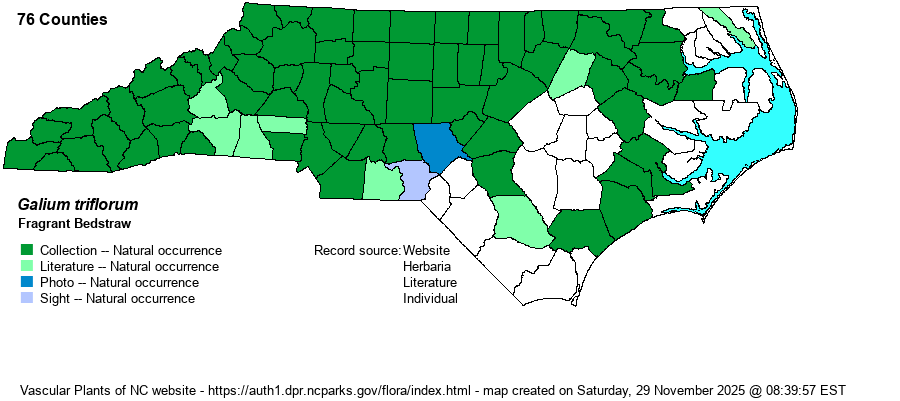| Author | Michaux | |
| Distribution | Throughout the Mountains and Piedmont; in the Coastal Plain found mainly in the northern portions, but it is scattered over much of the province except for the far eastern counties.
This is a very widespread species ranging from coast to coast across Canada and most of the U.S. It ranges south to the FL Panhandle though is scarce in much of the Coastal Plain region. | |
| Abundance | Fairly common to locally common in the Mountains and Piedmont; infrequent in the Coastal Plain, except locally numerous in the northern portion (such as near the Roanoke River). Seemingly absent from the far eastern counties and possibly in some near the SC border. | |
| Habitat | This is a species of shady conditions in mesic to rich forests. It also does grow in small forest openings or edges, but it mainly is a forest interior species. Weakley (2018) mentions that it usually grows on base-rich soil. | |
| Phenology | Blooms in July and August, and fruits soon after flowering. | |
| Identification | This is a mostly unbranched herb that tends to lean or other vegetation, and reaches about 2 feet long; the stem is glabrous or has a few hairs. This species has its leaves 6 to a whorl, each mostly elliptical and equally arranged/spaced around the stem, unlike the unequally spaced leaves in G. tinctorium. Each leaf is about 1.5 inches long and 1/2-inch wide, with a bristle tip. The flower clusters arise from leaf axils, more so on the upper part of the stem. The flowers are small and white to greenish-white. This species is normally easily identified by being the only Galium with 6 elliptical leaves in whorl. | |
| Taxonomic Comments | None
| |
| Other Common Name(s) | Sweet-scented Bedstraw, Sweet Bedstraw | |
| State Rank | S5 | |
| Global Rank | G5 | |
| State Status | | |
| US Status | | |
| USACE-agcp | FACU link |
| USACE-emp | FACU link |

